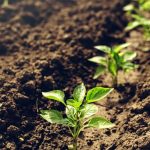A successful vegetable garden begins with good soil. The quality and composition of gardening soil for vegetables directly affect the health, growth, and ultimately, the yield of your crops. Understanding the importance of soil in vegetable gardening is essential for any gardener looking to cultivate a thriving and productive garden.
The nutritional needs of vegetables are closely tied to the soil they are grown in. Different types of soil offer various pros and cons that can either promote or hinder the growth of your plants.
Whether you are dealing with sandy, clay, silty, or loamy soil, each type comes with its own set of advantages and challenges when it comes to cultivating vegetables. By understanding how different soil types interact with your vegetables’ nutritional needs, you can make informed decisions on how to best care for your garden.
While good gardening soil is crucial for growing healthy vegetables, not all soils are naturally fertile. So how do you determine the quality and composition of your soil? Testing your soil is an important step in evaluating its fertility and structure. By analyzing its pH level, nutrient content, and texture, you can gain valuable insights into how to improve the quality of your soil for vegetable gardening.
Understanding the Nutritional Needs of Vegetables and How Soil Affects Growth
When it comes to gardening soil for vegetables, understanding the nutritional needs of your plants is crucial for a successful harvest. Vegetables require specific nutrients to grow and thrive, and the soil plays a key role in providing these essential elements.
One of the most important factors to consider is the pH level of the soil. Different vegetables have varying pH requirements, so it’s important to test your soil to ensure that it falls within the optimal range for the plants you want to grow.
For example, most vegetables prefer slightly acidic soil with a pH range of 6.0 to 7.0. If the pH is too high or too low, it can affect nutrient availability and hinder plant growth.
In addition to pH, understanding how different soil types affect the growth of vegetables is also crucial. Sandy soils drain quickly but may not retain enough moisture for certain vegetables, while clay soils hold onto moisture but can become waterlogged. Loamy soil, which is a balance of sand, silt, and clay, is often considered ideal for vegetable gardening as it retains moisture while still allowing for proper drainage.
| Nutritional Needs of Vegetables | Soil Effect on Growth |
|---|---|
| Specific nutrients required for vegetable growth | Soil pH levels affecting nutrient availability |
| Varying pH requirements for different vegetables | Different soil types affecting drainage and moisture retention |
Types of Soil for Vegetable Gardening
When it comes to choosing the right type of soil for vegetable gardening, there are several options to consider, each with its own set of pros and cons. Understanding the characteristics of different soil types can help you make an informed decision on which type is best suited for your specific needs.
Clay Soil
One common type of soil is clay soil, which is known for its ability to retain moisture and nutrients. While this can be beneficial for some plants, it can also lead to poor drainage and compacted soil, making it more difficult for plant roots to penetrate. To improve clay soil for vegetable gardening, you may need to add organic matter such as compost or peat moss to improve its texture and drainage.
Sandy Soil
On the other end of the spectrum is sandy soil, which drains quickly and has good aeration but often lacks essential nutrients. To enhance sandy soil for vegetable gardening, incorporating organic materials like compost or aged manure can help increase its nutrient content and water retention capacity.
Silt Soil
Silt soil is another type that falls in between clay and sand in terms of particle size. It has good water retention while also being well-draining, making it ideal for vegetable gardening. However, silt soil can become compacted over time, so it’s important to regularly amend it with organic matter to maintain its structure and fertility.
Each type of gardening soil for vegetables has its advantages and disadvantages. By understanding the characteristics and ways to improve different types of soil, you can make an informed decision on which type will best suit your vegetable garden’s needs. Whether you choose clay, sandy or silt soil, providing the proper care and amendments will ensure healthy growth and a bountiful harvest of delicious vegetables.
Testing Your Soil
When it comes to gardening, the quality and composition of the soil can greatly impact the success of your vegetable garden. To ensure a bountiful harvest, it is crucial to test your soil to understand its properties and make any necessary improvements before planting.
There are different methods for testing gardening soil for vegetables, including DIY kits and professional laboratory analysis. DIY kits are convenient and easy to use, providing immediate results on key indicators such as pH levels, nutrient content, and soil texture. On the other hand, professional laboratory analysis offers a more comprehensive assessment of your soil’s composition, providing detailed insights into micronutrient levels and potential contaminants.
Once you have determined the quality and composition of your gardening soil for vegetables, you can then take steps to improve it if necessary. This may involve adjusting pH levels, adding organic matter or nutrients, or addressing any drainage issues. By knowing the specific needs of your soil, you can create an optimal environment for your vegetable plants to thrive.
Improving Your Soil
When it comes to gardening soil for vegetables, one of the most effective ways to improve its quality is through composting and using organic amendments. This not only enhances the fertility of the soil but also promotes better plant growth and overall health. Here are some key methods and benefits of incorporating compost and organic amendments into your gardening practices:
- Composting: Compost is a nutrient-rich, natural fertilizer that enriches the soil with essential nutrients such as nitrogen, phosphorus, potassium, and other micronutrients. It also improves the soil structure, drainage, and water retention capacity, creating a more hospitable environment for vegetable plants to thrive.
- Organic Amendments: Organic materials such as aged manure, bone meal, fish emulsion, or seaweed can be added to soil to provide a slow release of nutrients over time. These amendments also contribute to beneficial microbial activity in the soil, which helps break down organic matter and make nutrients more available to plants.
By incorporating composting and organic amendments into your gardening routine, you can expect an improvement in soil texture, fertility levels, and overall plant health. Whether you choose to make your own compost or purchase organic amendments from local suppliers, these practices are essential for sustainable vegetable gardening.
In addition to improving the nutritional content of your gardening soil for vegetables, composting and organic amendments also contribute positively to environmental sustainability. These methods reduce waste by recycling organic materials into valuable resources that promote healthy plant growth without relying on synthetic fertilizers. In this way, you can create a more eco-friendly garden while reaping the benefits of nourishing your vegetable plants with natural, organic matter.
Best Practices for Planting Vegetables in Different Soil Types
When it comes to planting vegetables in different soil types, it’s important to understand the specific needs of each type of vegetable. Different vegetables thrive in different soil conditions, so it’s essential to tailor your planting and care practices to the specific needs of each plant. Understanding the characteristics of your soil and how they affect the growth of your vegetables is crucial for a bountiful harvest.
For sandy soil, which drains quickly and has difficulty retaining moisture and nutrients, it’s important to choose vegetables that are well-suited for these conditions. Examples of vegetables that do well in sandy soil include carrots, radishes, and peppers. To improve sandy soil, consider adding organic matter such as compost or well-rotted manure to increase its ability to retain moisture and nutrients.
On the other hand, clay soil tends to retain too much moisture and can be difficult for plant roots to penetrate. Vegetables that thrive in clay soil include broccoli, cabbage, and spinach. To improve clay soil, incorporate organic matter like compost or peat moss to help loosen the soil and improve drainage.
Lastly, loamy soil is considered the ideal type of gardening soil for vegetables as it provides good drainage while still retaining essential moisture and nutrients. Most vegetables will thrive in loamy soil, making it easier to maintain healthy plants with minimal effort.
When planting vegetables in different types of soils, be mindful of spacing between plants as well as proper watering techniques based on your specific soil type. These best practices will help ensure healthy growth and a successful harvest no matter what type of gardening soil for vegetables you have.
| Soil Type | Recommended Vegetables |
|---|---|
| Sandy Soil | Carrots, Radishes, Peppers |
| Clay Soil | Broccoli, Cabbage, Spinach |
| Loamy Soil | Most Vegetables |
Maintaining Healthy Soil
Once you have prepared the right gardening soil for vegetables, it is equally important to maintain its health. Proper watering, mulching, and monitoring of soil pH are essential to ensure a bountiful harvest of vegetables.
Watering is crucial for the growth and development of vegetable plants. Different types of vegetables have varying water needs, so it’s important to research and understand the specific requirements of the plants you are growing.
Overwatering can lead to root rot and diseases, while underwatering can cause stunted growth and poor yield. To maintain healthy soil moisture levels, consider installing a drip irrigation system or using a soaker hose to deliver water directly to the root zone without wasting water through evaporation.
Mulching is another important practice for maintaining healthy soil in vegetable gardening. Mulch helps regulate soil temperature, retain moisture, suppress weeds, and improve overall soil structure. Organic mulches like straw, wood chips, or compost can be used to cover the soil surface around vegetable plants. Mulch should be applied in a layer several inches thick to provide adequate insulation for the roots and prevent erosion.
Soil pH plays a significant role in the availability of nutrients for plant uptake. Most vegetables prefer a slightly acidic soil with a pH range of 6.0-7.0. Testing your soil for pH levels will help determine if any adjustments need to be made. Adding organic matter like compost or peat moss can help lower pH levels in alkaline soils, while adding agricultural lime can raise pH levels in acidic soils.
By following these best practices for maintaining healthy soil in vegetable gardening, you can ensure that your plants receive the necessary nutrients and conditions for optimal growth and productivity.
Remember that gardening is an ongoing process that requires regular attention and care – especially when it comes to nurturing healthy soil for your vegetable garden.
Troubleshooting Common Soil Issues in Vegetable Gardening
Identifying Soil Problems
When it comes to vegetable gardening, one of the most important aspects to consider is the quality of the soil. However, even with the best intentions and efforts, there may still be issues that arise in your gardening soil for vegetables.
Common problems may include poor drainage, compacted soil, nutrient deficiencies, and pH imbalances. It’s essential to be able to identify these issues early on so that you can take appropriate measures to address them and ensure the healthy growth of your vegetable plants.
Addressing Poor Drainage
One of the most common soil issues in vegetable gardening is poor drainage. This can lead to root rot and other problems for your plants.
If you notice that your soil is holding too much water or taking a long time to dry out after watering, it may be an indication of poor drainage. To address this issue, you can consider incorporating organic matter such as compost or well-rotted manure into the soil to improve its structure and drainage capabilities.
Dealing With Nutrient Deficiencies
Another common problem in vegetable gardening soil is nutrient deficiencies. Different types of vegetables have varying nutritional needs, and it’s crucial to ensure that your soil provides adequate levels of essential nutrients such as nitrogen, phosphorus, and potassium. Regularly testing your soil can help you identify any deficiencies and allow you to make adjustments by adding organic fertilizers or amendments tailored to the specific needs of your vegetables.
By being aware of these common soil issues and knowing how to address them effectively, you can create an optimal growing environment for your vegetable garden. Taking proactive steps to troubleshoot and improve your gardening soil for vegetables will ultimately result in healthier plants and a more bountiful harvest at harvest time.
Conclusion
In conclusion, choosing the best gardening soil for vegetables is essential to ensuring a bountiful harvest. The nutritional needs of vegetables are directly impacted by the quality and composition of the soil in which they are grown. Understanding the pros and cons of different soil types, testing your soil, and implementing improvement strategies such as composting and organic amendments are crucial steps in creating optimal conditions for vegetable growth.
One of the key takeaways from this discussion is the importance of maintaining healthy soil through proper watering, mulching, and monitoring soil pH. These practices not only support the growth and development of vegetables but also contribute to long-term soil health and fertility. By troubleshooting common soil issues and implementing best planting practices for different soil types, gardeners can maximize their chances of success in growing a diverse range of vegetables.
In summary, whether you’re an experienced gardener or just starting out, investing time and effort into understanding and choosing the right gardening soil for vegetables will pay off in a thriving garden full of nutritious produce. By following the guidelines outlined in this article, you can create an environment that promotes healthy plant growth, ultimately leading to a successful and rewarding gardening experience.
Frequently Asked Questions
What Type of Soil Is Best for Vegetable Garden?
The best type of soil for a vegetable garden is loamy soil, which is a combination of sand, silt, and clay. This type of soil provides good drainage while also retaining essential nutrients and moisture for the plants to thrive.
What Should I Add to My Soil Before Planting Vegetables?
Before planting vegetables, it’s important to add organic matter to the soil such as compost or well-rotted manure. This helps improve soil structure, retain moisture, and provide essential nutrients for the vegetables to grow healthily.
Can You Use Regular Potting Soil to Grow Vegetables?
While regular potting soil can be used to grow vegetables in containers or raised beds, it may not be the best option for in-ground vegetable gardens. Regular potting soil is specially formulated for container use and may not provide adequate drainage or nutrients for vegetables grown directly in the ground.
It’s better to use a specific vegetable garden soil mix or amend the existing soil with organic matter before planting vegetables in the ground.

If you’re looking to get into vegetable gardening, or are just looking for some tips on how to make your current garden better, then you’ve come to the right place! My name is Ethel and I have been gardening for years. In this blog, I’m going to share with you some of my best tips on how to create a successful vegetable garden.





